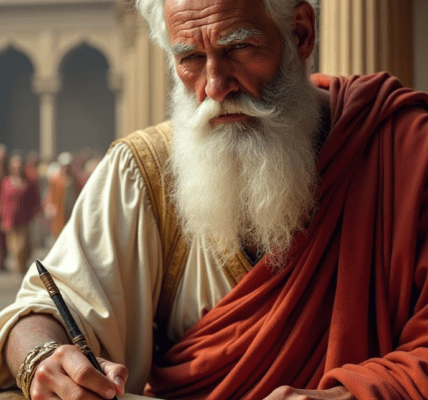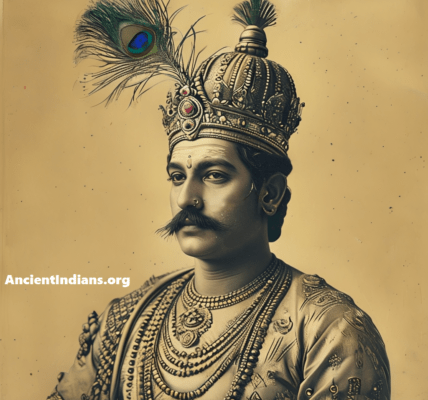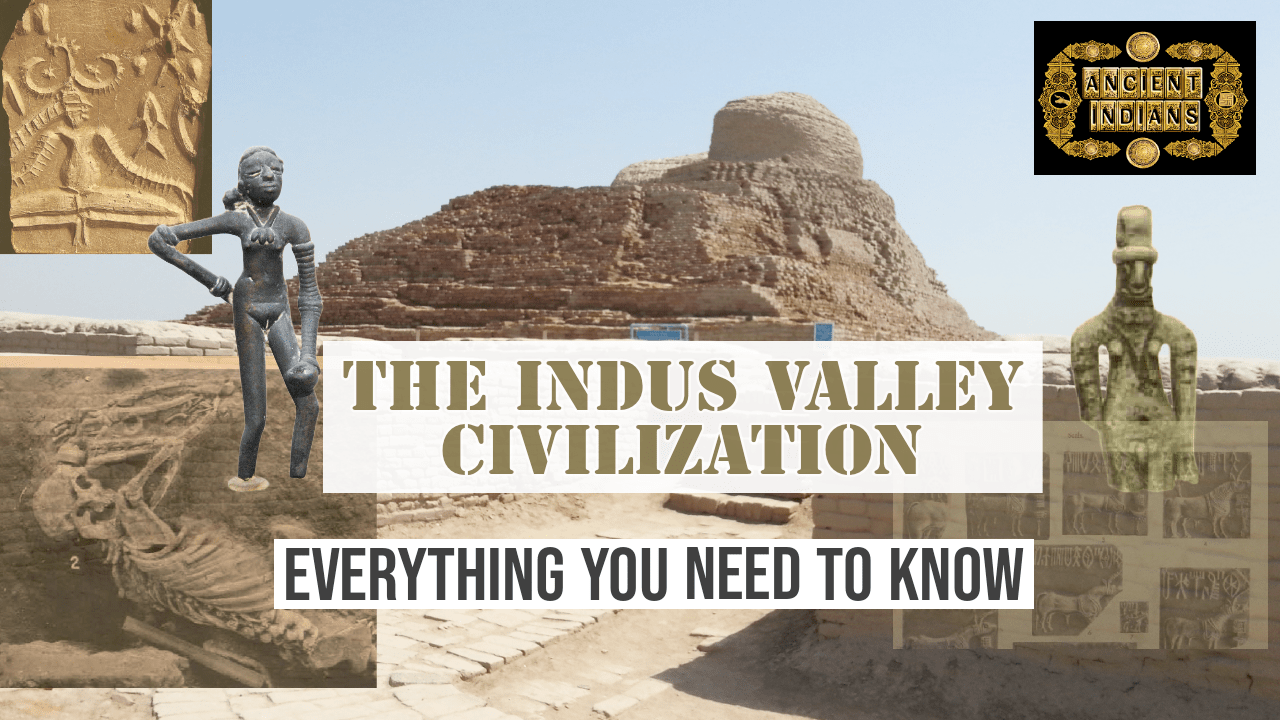When Xuanzang (Hiuen Tsang) visited Punjab in the 7th century, he documented a vibrant Buddhist landscape. He wrote of fifty monasteries in Jalandhar, thousands of monks deep in study, and viharas spread across Thanesar and Kulu. It was clear — the land of the five rivers had deep roots in Buddhism. Like much of India, that tradition began to fade by the 12th century. But elsewhere, the past still speaks — through the stūpas of Sanchi, the caves of Ajanta and Ellora, and the ruins of Nalanda. In Punjab, it’s different. Here, even the physical evidence of its once-strong presence has nearly vanished. Aside from places like Sanghol, most of what Xuanzang saw is gone. The monasteries, the monks, the memory — Buddhism in Punjab was not only forgotten, it was almost entirely erased from the landscape.
The Birth of Buddhism in Punjab
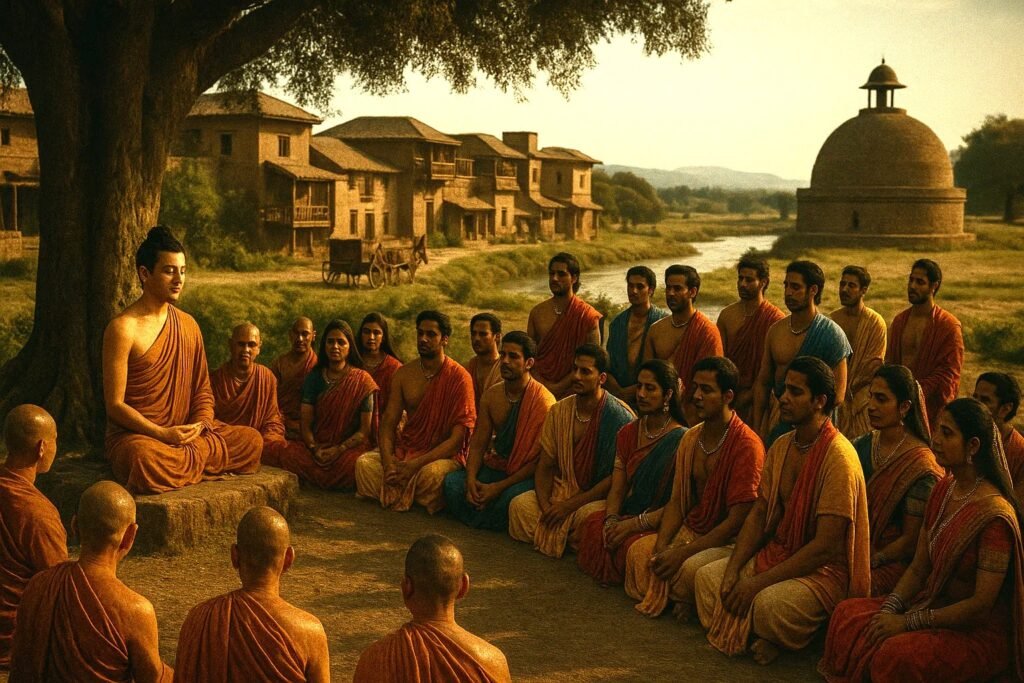
Before Buddhism emerged, Punjab’s spiritual world was already diverse. People followed Vedic traditions, worshipped deities like Indra, and believed in rebirth and liberation. Jainism had also started spreading. This pluralism made Punjab fertile ground for the Buddha’s teachings.
Although the Buddha taught mainly in eastern India, traditions suggest he may have passed through parts of present-day Punjab, Haryana, and Himachal. In the Kuru region—modern Haryana—he is said to have preached in Kammasadhamma (possibly Kaithal) and Thullakotthita (Thanesar), where he delivered discourses like the Satipatthana Sutta. In Thanesar, nobleman Ratthapala reportedly became a monk after hearing him.
Other linked places include Srughna (Sugh), Kuluta (Kullu), Taki (Asrur in Pakistan’s Gujranwala), Sialkot, and Agroha. Taxila, a major university town, was a key center of early Buddhism. While it’s unclear if the Buddha visited, figures like his physician Jivaka studied there. King Puskarsari of Gandhara reportedly traveled from Taxila to meet the Buddha — a sign of the region’s ties to his teachings.
Punjab also produced key Buddhist thinkers. Katyayaniputra of the Sarvāstivāda school and Vasumitra, a leader of the Fourth Council, hailed from this region. Even if his visit is uncertain, Punjab clearly became a vibrant bridge between India and Central Asia for the Dhamma.
Asoka’s Buddhist Punjab

Under Emperor Asoka, Buddhism flourished — and Punjab stood at its heart. Before his reign, Asoka served as viceroy at Taxila. After embracing Buddhism, he promoted Dhamma-vijaya (conquest through righteousness) and sent missionaries across India and beyond.
Asoka sent the monks Majjhantika and Maharakkhita to establish Buddhism. Majjhantika was sent to Gandhara, and Maharakkhita to the Yona region — Greek settlements in present-day Punjab and Afghanistan. He also built monasteries and stupas, many of which were still visible when Xuanzang visited six centuries later.
Xuanzang described a vibrant Buddhist Punjab: the Dharmarajika stupa at Taxila, great monuments at Sialkot, Taki, Ketas, Manikyala, and active sites in Srughna, Thanesar, Sirhind, Kullu, and Jalandhar — where 50 monasteries and nearly 2,000 monks thrived, mostly Mahayana followers.
Some sites were built by Asoka, others on earlier sacred ground — part of his strategy to root Buddhism into local memory. His Topra pillar (later moved to Delhi) bore edicts urging compassion and ethical rule.
Later, local kings like Raja Dhanabhuti of Srughna built major stupas and funded monuments like Bharhut’s East Gateway. His descendants continued this legacy. The Mauryan stupa at Chaneti still stands, echoing this patronage. Buddhism in Punjab thrived due to both imperial vision and local devotion.
Milinda, Kanishka, and the Councils
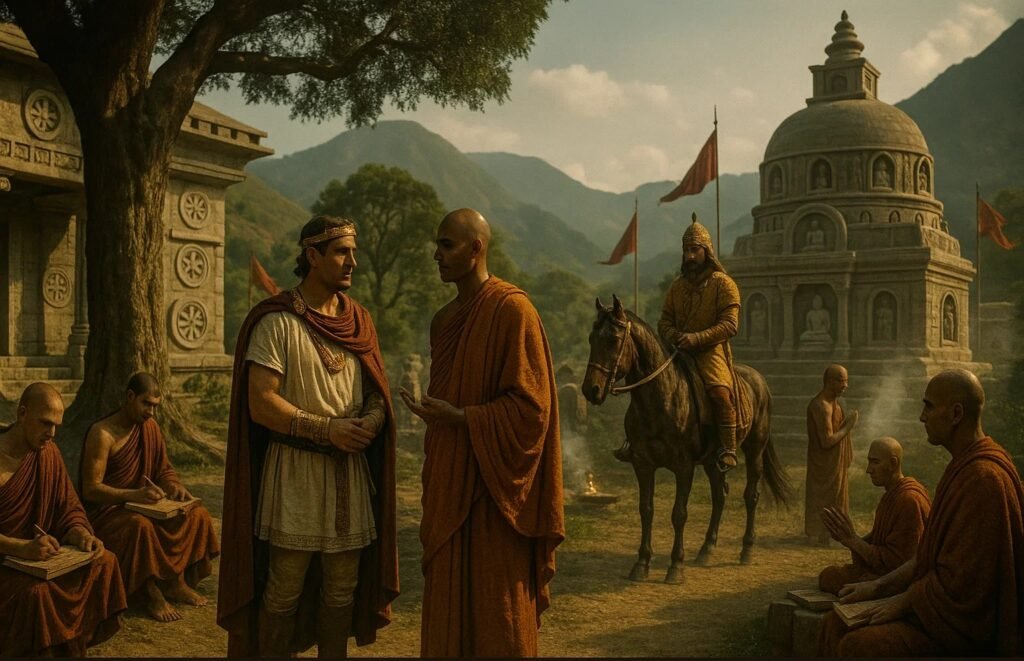
Post-Mauryan Punjab saw new Buddhist patrons — foreign rulers who adopted the Dhamma. Indo-Greek king Menander (Milinda), ruling from Sagala (modern Sialkot) around 160 BCE, converted after debates with monk Nagasena, recorded in the Milinda-Panho. He built the Milinda Vihara and issued coins with the Dharma Chakra. Haryana and Himachal Pradesh preserve scattered relics — stupas and inscriptions from Chaneti, Tosham Hill, and Chetru — but these are poorly preserved.
Next came the Audumbaras and Kunindas. The Audumbaras (in Gurdaspur-Hoshiarpur) were dubbed a “citadel of Buddhism,” and their coins featured stupas. The Kunindas, linked to Sugh, carried on Dhanabhuti’s legacy. Some of their descendants — like the Kanets in Himachal — still follow Buddhism.
The Kushans brought a Buddhist golden age. Kings like Maues and Kadphises I minted coins featuring the Buddha. But it was Kanishka (c. 78–101 CE) who transformed Buddhism’s course. He expanded the empire, embraced Buddhism deeply, and convened the Fourth Council — possibly in Kashmir or Jalandhar. Led by Vasumitra and Ashvaghosha, the council compiled key Mahayana texts.
Kanishka’s reign also marked the rise of Gandhara art, combining Greek style with Buddhist themes — shifting depictions of the Buddha from symbolic to human form. His stupa at Peshawar and relic casket were monumental. Successors like Huvishka and Vasudeva continued his patronage, with Huvishka helping restore Bodh Gaya’s temple.
Under Kushan rule, Punjab became a center of royal patronage and doctrinal development.
Table 1: Chronology of Key Buddhist Periods and Events in Punjab (and surrounding regions)
| Period/Century | Key Event/Figures | Significance for Buddhism in Punjab |
| 6th Century BC | Buddha’s Traditional Visits | Early sanctification of the land, direct discipleship for some Punjabis. |
| 3rd Century BC | Asoka’s Reign (Mauryan Empire) | Imperial patronage, extensive stupa/monastery construction, Third Buddhist Council, local Srughna kingdom flourishes. |
| 2nd Century BC | Indo-Greek Rule (Milinda) | Philosophical dialogue (Milinda-Panho), royal conversion and patronage, establishment of Milinda-Vihara. |
| 1st Century BC – 2nd Century CE | Saka and Kushan Dynasties (Maues, Kadphises I, Kanishka) | Continued royal patronage, Buddha figures on coins, Fourth Buddhist Council (Jalandhar/Kashmir), flourishing of Gandhara art. |
| 4th – 5th Century CE | Gupta Era and Eminent Scholars (Asanga, Vasubandhu, Fa-Hian’s visit) | Punjab as a center of Mahayana philosophy, prolific scholarly output, large monastic population. |
| 7th Century CE | Harsha’s Reign (Hiuen Tsang’s visit) | Imperial support, vibrant monastic life, Punjab as a transit and study hub for pilgrims. |
| 8th – 13th Century CE | Post-Harsha Decline and Lingering Presence | Loss of royal patronage, political upheavals, Muslim invasions leading to decline in plains, last Punjabi Buddhist king (Asoka-balla). |
| 13th Century A.C. – 19th Century CE. | Survival in Himalayas, Disappearance from Plains | Buddhism persists in remote hilly tracts (Lahul, Spiti, Kinnaur) due to Tibetan influence; largely forgotten in plains. |
| Late 19th Century – Present | Modern Revival | Anagarika Dharmapala’s missionary work, Ambedkarite movement, establishment of new Viharas, growing Buddhist population. |
Asanga, Harsha, and the Last Buddhist Flowering in Punjab

After the Kushans, Punjab remained a Buddhist hub through the Gupta and Harsha eras. Although the Guptas leaned toward Hinduism, they supported Buddhism. Vasubandhu, one of Buddhism’s most important scholars, advised the Gupta kings, particularly Chandragupta II.
Punjab produced other giants like Asanga and Vasubandhu, born in Peshawar and educated in Kashmir. They transitioned from Sarvāstivāda to Yogācāra. Asanga’s Yogācārabhūmi-śāstra and Vasubandhu’s Abhidharmakośa (written in Sakala/Sialkot) shaped Mahayana Buddhism. Xuanzang would later study under their disciples at Chinapati (Patti) and Jalandhar.
Other scholars included Katyayana, Vasumitra, Kumarlata, and Chandravarma. Fa-Hien noted thousands of monks practicing both Hinayana and Mahayana across the region.
Emperor Harsha, born in Thanesar, revived Buddhism with vigor. Xuanzang recorded his patronage and described active monasteries: 50 in Jalandhar, 3 in Thanesar, 20 in Kullu. Harsha held a grand assembly at Kanauj and a 75-day charity festival at Prayaga. But his death marked the end of imperial support. Buddhism in Punjab began to decline.
The Slow Eclipse of Buddhism in Punjab
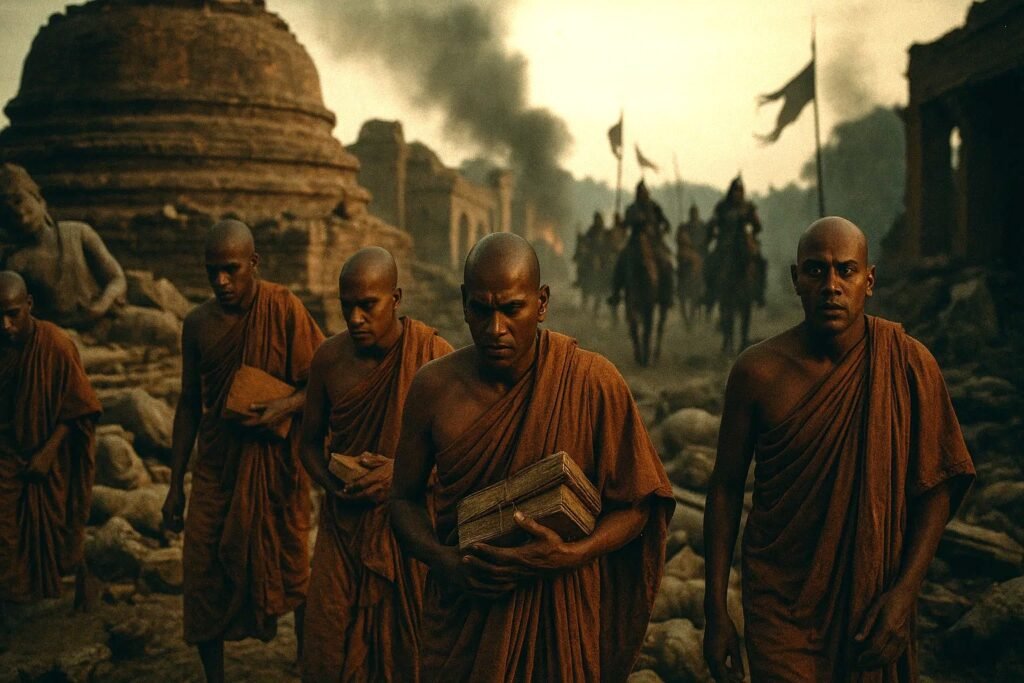
Harsha’s death in the 7th century ushered in a slow decline. Rajput rulers promoted martial values at odds with Buddhist ideals. Political fragmentation and lack of support weakened the Sangha.
From the late 10th century, invasions from the Ghaznavids devastated Punjab. Mahmud of Ghazni’s attacks on Nagarkot (1008) and Thanesar (1011) were especially destructive. By 1021, Punjab was absorbed into the Ghaznavid Empire. Buddhist infrastructure collapsed under continued foreign rule.
Yet Buddhism didn’t vanish instantly. Inscriptions show it lasted in pockets into the 12th–13th centuries. Raja Asoka-balla (or Asokachalla) of Sapadalaksha made donations to Bodh Gaya’s temple in 1157 or 1251 CE, calling himself a Mahayana adherent. His base may have been in Jalandhar or Kangra.
Tibetan pilgrims like Orgyan pa visited the Jalandhar region (between Sutlej and Beas) to honor Nagarjuna, describing towns like Nagarkot and ascetics in nearby caves. But by the 14th century, Buddhist life faded. Its decline came from loss of patronage, revival of Brahmanical identity, internal stagnation, and invasion-driven collapse.
The Missing Monuments of Buddhist Punjab
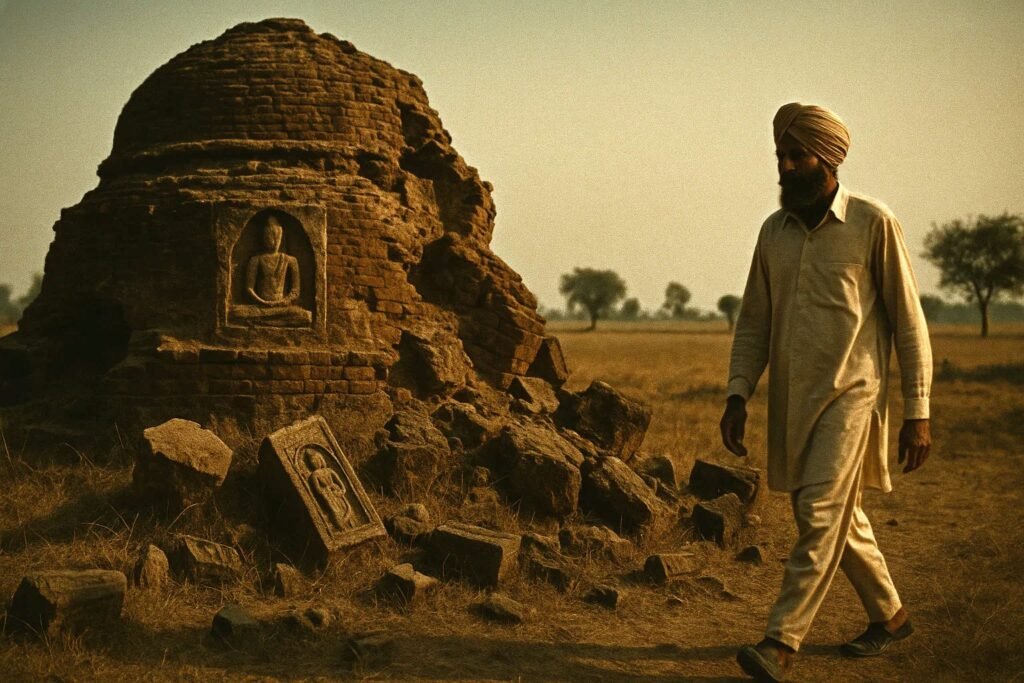
Today, little remains of Punjab’s Buddhist heritage. The monasteries and stupas described by Xuanzang have mostly disappeared due to invasions, neglect, and changing times. In contrast to Taxila’s ruins in Pakistan, Indian Punjab has few intact remains.
Haryana and Himachal Pradesh preserve scattered relics — stupas and inscriptions from Chaneti, Tosham Hill, and Chetru — but these are poorly preserved compared to other Buddhist sites in India.
The lone major exception is Sanghol in Fatehgarh Sahib district. Known locally as Uchha Pind, excavations here uncovered two stupas, monastic complexes, and over a hundred sculpted slabs from the Kushana era. A Kharosthi-inscribed relic casket found here may have held Buddha’s remains. Sanghol, likely a key stop on the Uttarapatha trade route, may correspond to Xuanzang’s She-to-tu-lu. Yet the site remains obscure and under-promoted.
Punjab Today
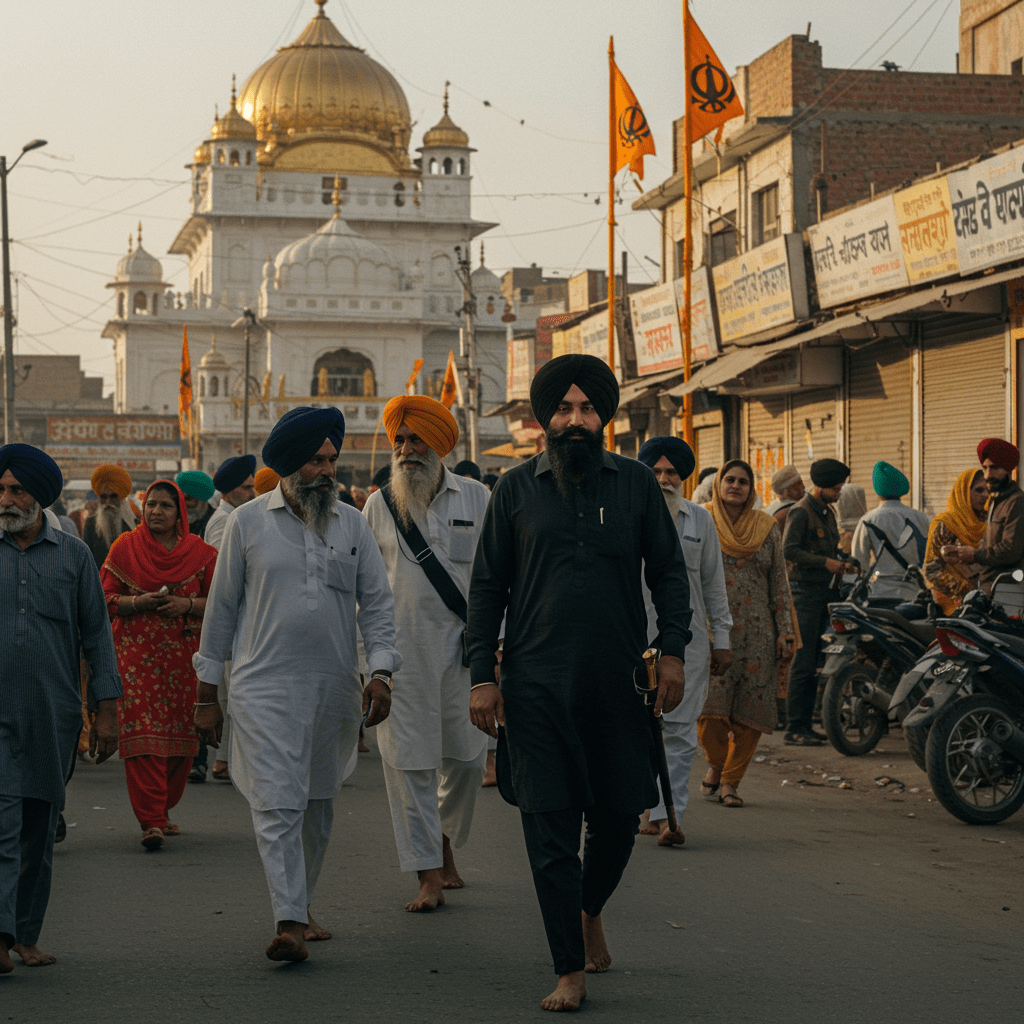
Punjab today is predominantly Sikh — nearly 58% of the population — the only Indian state with a Sikh majority. Hinduism has a strong presence, while Islam, Christianity, and others form smaller groups.
Buddhism survives on the margins, mainly through Dalit converts inspired by Dr. B.R. Ambedkar’s 1956 movement. For many, Buddhism offers dignity and social justice. Cities like Jalandhar now host active modern viharas. These quiet revivals preserve a forgotten past.
While Sikhism shapes Punjab’s modern identity, Buddhism’s legacy lingers — in ruins like Sanghol, in scriptures, and in the determination of communities keeping the Dhamma alive.
Sources:
- Abhir, D. C. (1971). Buddhism in the Punjab, Haryana and Himachal Pradesh. New Delhi: Maha Bodhi Society of India.
- Abhir, D. C. (1989). Heritage of Buddhism. New Delhi: B. R. Publishing Corporation.
- Sarao, K. T. S. (2012). The decline of Buddhism in India: A fresh perspective. New Delhi: Munshiram Manoharlal Publishers Pvt. Ltd. Retrieved from https://www.du.ac.in/du/uploads/departments/BuddhistStudies/Study%20Material/Susmita/The%20Decline%20of%20Buddhism%20in%20India.pdf
- The Tribune. (2019, November 17). Uchha pind of Buddhism in Punjab. The Tribune India. Retrieved June 27, 2025, from https://www.tribuneindia.com/news/archive/spectrum/uchha-pind-of-buddhism-in-punjab-861196
- The Tribune. (2018, December 6). 8,000 Punjab Buddhists, majority loyal to Ambedkar. The Tribune India. Retrieved June 27, 2025, from https://www.tribuneindia.com/news/archive/punjab/8-000-punjab-buddhists-majority-loyal-to-ambedkar-694124
- Wikipedia contributors. (n.d.). Religion in the Punjab. Wikipedia, The Free Encyclopedia. Retrieved June 27, 2025, from https://en.wikipedia.org/wiki/Religion_in_the_Punjab

